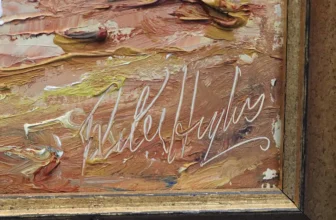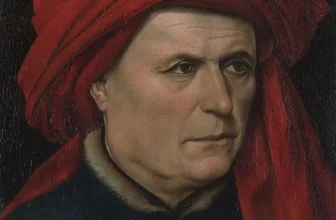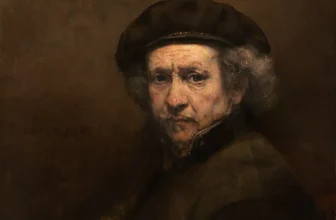Landscape with Tobias and the Angel Painting
Salvator Rosa’s “Landscape with Tobias and the Angel” is a profound and enigmatic painting that weaves biblical narrative, classical landscape, and Baroque sensibilities into a unified, emotive whole. Created in the 17th century, this painting is a powerful representation of spiritual journey, divine guidance, and the human confrontation with the unknown. More than just a religious illustration, Rosa’s work is layered with meaning, artistic innovation, and symbolic resonance.
This comprehensive story post aims to unpack the meaning, symbolism, style, and context of Landscape with Tobias and the Angel, while also providing insight into the artist behind it, Salvator Rosa, and the painting’s current location.
Who Painted Landscape with Tobias and the Angel?
Salvator Rosa (1615–1673) was an Italian Baroque painter, poet, and printmaker known for his romantic, often wild and untamed landscapes, as well as his rebellious personality and philosophical leanings. Born in Naples, Rosa studied under the influence of Caravaggio and developed his own distinctive style that often fused dramatic scenery with mythological, biblical, or philosophical themes.
Rosa was part of a movement that began to challenge the prevailing norms of art during the Baroque period. While most artists of the time were preoccupied with idealized beauty and clarity, Rosa’s works were darker, more mysterious, and often filled with stormy skies, rugged cliffs, and lonely travelers. He brought a unique intensity and emotional depth to the genre of landscape painting, treating it not merely as a backdrop but as a protagonist in itself.
What is Landscape with Tobias and the Angel All About?
Landscape with Tobias and the Angel is based on a story from the Book of Tobit, one of the deuterocanonical texts found in the Catholic and Orthodox versions of the Bible. The narrative centers on Tobias (or Tobiah), the son of Tobit, who is sent on a journey to retrieve a debt and is accompanied by the Archangel Raphael, though Tobias does not initially know the true identity of his companion.
Along their journey, the angel teaches Tobias how to survive, fight off a demonic force, and heal his father’s blindness using parts of a fish they catch. The journey is one of spiritual and personal growth, reflecting trust in divine guidance and the hidden hand of providence.
In Rosa’s painting, we witness a moment during this sacred journey, Tobias and Raphael are depicted walking together in a vast, rugged landscape. Though their figures are small compared to the sweeping grandeur of nature, their relationship and the journey they undertake form the emotional heart of the piece.
What is Happening in the Landscape with Tobias and the Angel Painting?
In Landscape with Tobias and the Angel, we see Tobias led by Raphael, a serene and commanding figure, through a wilderness setting. Raphael typically holds or gestures toward Tobias, guiding him, while Tobias often carries a fish, a reference to the miraculous catch that becomes a key plot point in the story.
The painting often includes a dog trotting along beside them, which has become a traditional inclusion in depictions of this biblical scene, symbolizing loyalty and guidance. Tobias, being young and naive, looks up to Raphael, who is calm, composed, and knowing, highlighting the theme of divine mentorship and spiritual instruction.
However, what makes Rosa’s rendering of this scene exceptional is how he transforms it into a philosophical and emotional landscape. The figures of Tobias and Raphael are dwarfed by the vast, ominous wilderness around them, dark forests, craggy rocks, brooding skies. It’s not a gentle pilgrimage but a heroic journey through adversity.
The visual elements underscore the challenges and uncertainty of spiritual journeys. It is not merely the figures who tell the story; the landscape itself acts as a narrative device, communicating isolation, transformation, and the grandeur of the divine presence in nature.
Symbolism and Interpretation
The painting is rich with symbolism, much of which deepens the spiritual and emotional themes of the Tobias story.
1. The Landscape
Rosa’s wild and sublime landscape symbolizes the unpredictability of life and the spiritual terrain we all must traverse. The rough cliffs, gnarled trees, and stormy skies suggest a world filled with danger and uncertainty. But the fact that Tobias is accompanied by Raphael indicates divine providence and protection even amidst chaos.
This setting reflects Rosa’s philosophical pessimism, he was known to be skeptical, even cynical, about human nature and divine justice. The painting’s setting can be read as a memento mori, a reminder of the fragility and smallness of human life within the vastness of the cosmos.
2. Tobias
Tobias represents innocence and faith, a young man stepping into the unknown. His journey is a rite of passage, a transformation from boyhood into spiritual maturity. The fish he carries is a direct reference to the Book of Tobit, in which Raphael tells him to catch and use its organs for healing. The fish is also a Christian symbol, representing Christ and faith.
3. The Angel Raphael
Raphael embodies divine guidance, healing, and knowledge. He knows the path, even when Tobias does not. His calm demeanor and assertive posture suggest certainty in a world of uncertainty, a symbol of the divine hand that guides the faithful through trial.
4. The Dog
The dog is traditionally associated with fidelity and protection. It may also serve to underscore Tobias’s humanity and vulnerability, a companion on the physical and spiritual path.
What Type of Art is Landscape with Tobias and the Angel?
This painting is best classified as a Baroque religious landscape, but it uniquely blends multiple genres:
Religious Art: It draws on biblical narrative, focusing on divine interaction with humanity.
Landscape Painting: Nature is not just a backdrop but a central, expressive element.
Philosophical Art: Rosa’s landscapes often explore metaphysical themes, mortality, divine will, human insignificance.
Unlike the neat and harmonious landscapes of classical painters like Claude Lorrain, Rosa’s works are rugged, romantic, and sublime, more akin to what would later be seen in the Romantic movement of the 18th and 19th centuries. His paintings are emotional and dramatic, filled with visual metaphors.
This fusion of landscape with spiritual storytelling anticipates later developments in art, where the environment becomes a mirror of the psyche, as seen in the works of Caspar David Friedrich or even in the Symbolist movement.
The Painting’s Stylistic Elements
Dramatic Contrast: Rosa employs chiaroscuro, strong contrasts between light and shadow, to give emotional weight and depth.
Dynamic Composition: The eye is led through the painting by the movement of the figures and the natural contours of the landscape.
Muted, Earthy Palette: Reflects the seriousness of the theme and the rawness of nature.
Expressive Brushwork: Adds a sense of movement and immediacy.
Rosa’s Personal Connection to the Subject
It’s worth noting that Rosa was deeply invested in philosophy and humanist thought. His writings reveal a soul wrestling with fate, mortality, and the limits of human reason. Landscape with Tobias and the Angel can be seen as Rosa’s spiritual autobiography, an allegory for the artist’s own search for meaning, guided by uncertain but unwavering faith in something beyond himself.
Rosa’s resistance to authority, both political and religious, adds further nuance to his version of this biblical tale. Rather than idealize the spiritual path, he renders it harsh, solemn, and fraught with danger, yet ultimately guided by hope.
Where is the Landscape with Tobias and the Angel Painting Today?
Landscape with Tobias and the Angel by Salvator Rosa is housed in the Museo di Capodimonte in Naples, Italy. This museum contains a rich collection of Italian Baroque and Renaissance art, and Rosa’s work finds an apt home here among masterpieces that similarly explore the relationship between divine mystery and human experience.
Cultural Impact
Although Salvator Rosa was somewhat of an outsider during his time, his landscapes were considered unconventional, his influence has only grown. He paved the way for later landscape artists who sought to infuse natural settings with emotion, narrative, and philosophical depth.
Landscape with Tobias and the Angel stands as a bridge between biblical storytelling and Romantic naturalism, offering viewers not just a visual spectacle, but an existential meditation. In this way, the painting remains relevant even in modern times, it speaks to the universal experience of stepping into the unknown, guided by faith, hope, and unseen forces.
Salvator Rosa’s Landscape with Tobias and the Angel is a masterpiece of narrative landscape painting, blending deep religious symbolism with the sublime power of nature. The small figures of Tobias and Raphael, journeying through a vast and perilous wilderness, encapsulate the essence of human vulnerability and divine guidance.
In Rosa’s vision, landscape is not just environment, it is metaphor, mood, and meaning. The painting challenges us to consider how we navigate the wilderness of life, and who or what serves as our guide.
Whether seen as a religious tale, a philosophical journey, or a poetic landscape, Landscape with Tobias and the Angel remains one of Rosa’s most compelling and resonant works, a beacon of Baroque artistry and spiritual depth.




